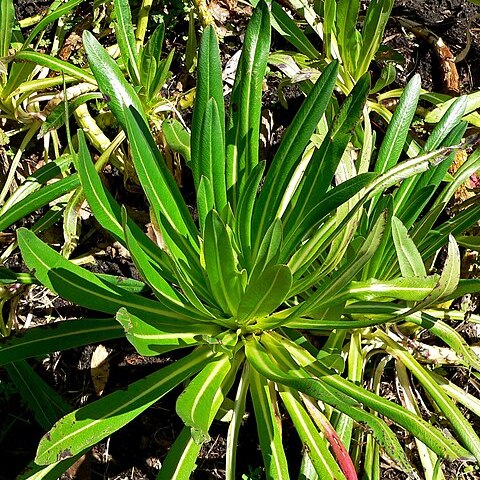Rosette–leaves of unflowered plant sessile, narrowly oblanceolate to oblong–ovate, 25–90 x 4–15 cm., acute to acuminate at the apex, attenuate at the base, pubescent beneath especially on the veins or glabrous, weakly pubescent or glabrous above; margin doubly serrate, dentate or denticulate; venation protruding beneath with costae in ± 30–40 pairs arising at an angle of 60–90° to the midrib.
Corolla 25–35 mm. long, greenish or greenish white often tinged with blue or purple, split to the base on the back, ± pubescent on the outside at least at the apex, glabrous inside; two lateral petals linear, ± united with middle petals below; three middle petals united to form a lip with linear lobes.
Inflorescence 1–3 m. long, dense, cylindrical, unbranched; pedicels 4–8 mm. long, pubescent, with two minute linear bracteoles; bracts linear to narrowly lanceolate, 25–75 x 2–4 mm.
Anther–tube (6)9–15 mm. long, the two lower anthers apically barbate, otherwise glabrous or occasionally pubescent on connectives.
Calyx–lobes narrowly triangular to linear, flat, 10–28 mm. long, entire, ± pubescent especially on the outside.
Capsule ±10 mm. long, 10–nerved, pubescent, crowned by the hardening calyx–lobes and with two short valves.
Seeds elliptic–oblong in outline, compressed, narrowly winged, ± 0–8 mm. long, finely striate, pale brown.
Filaments linear, connate for most of their length, ± papillose at the margins, free from corolla.
Stem erect, 6–12 cm. thick and woody at the base, terete, hollow, ± pubescent above.
Hypanthium obovoid, ± truncate at the base, 10–nerved, pubescent.
Plant 2–9 m. tall in flower, suckering from the base.
Ovary subinferior.

